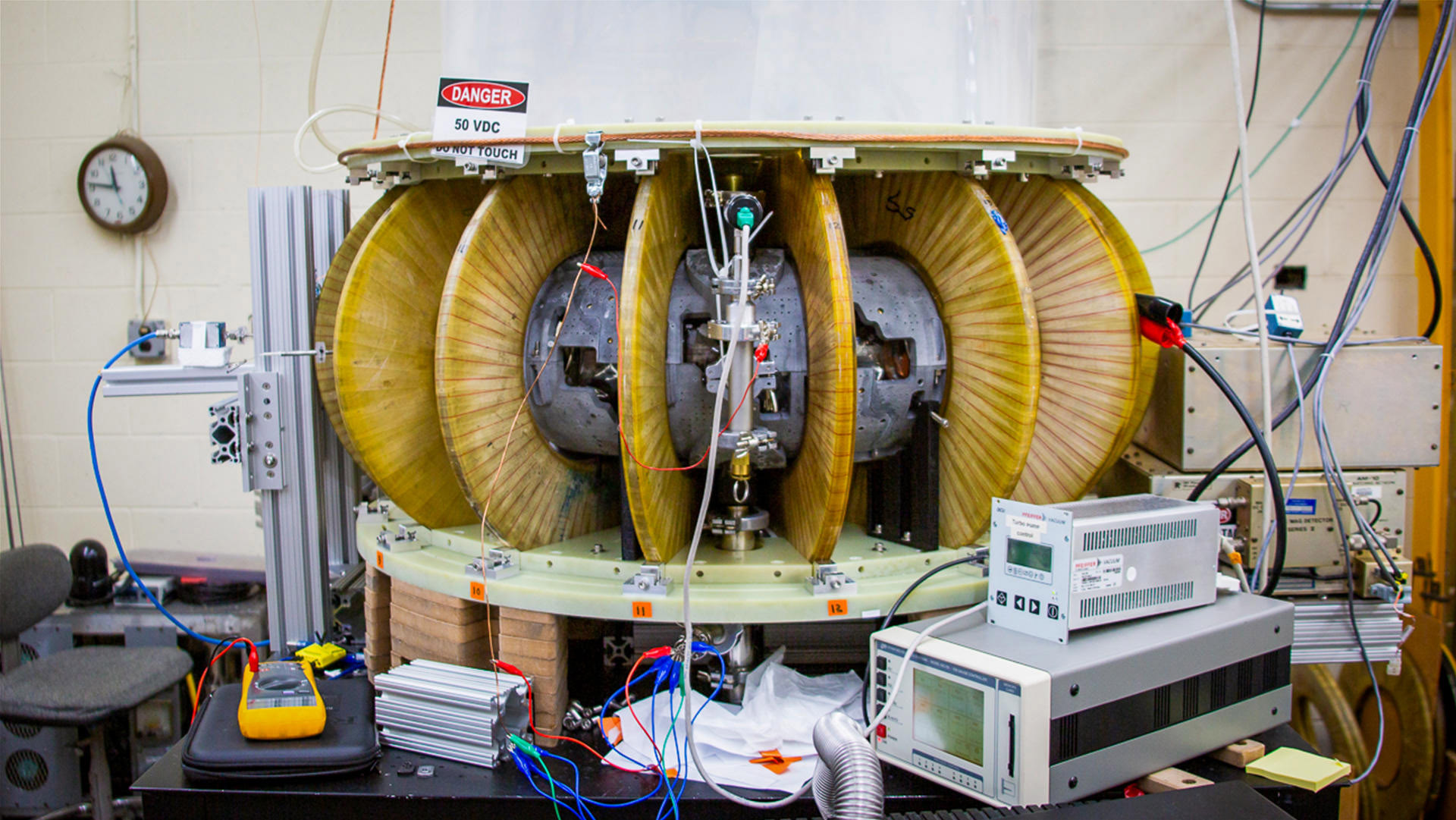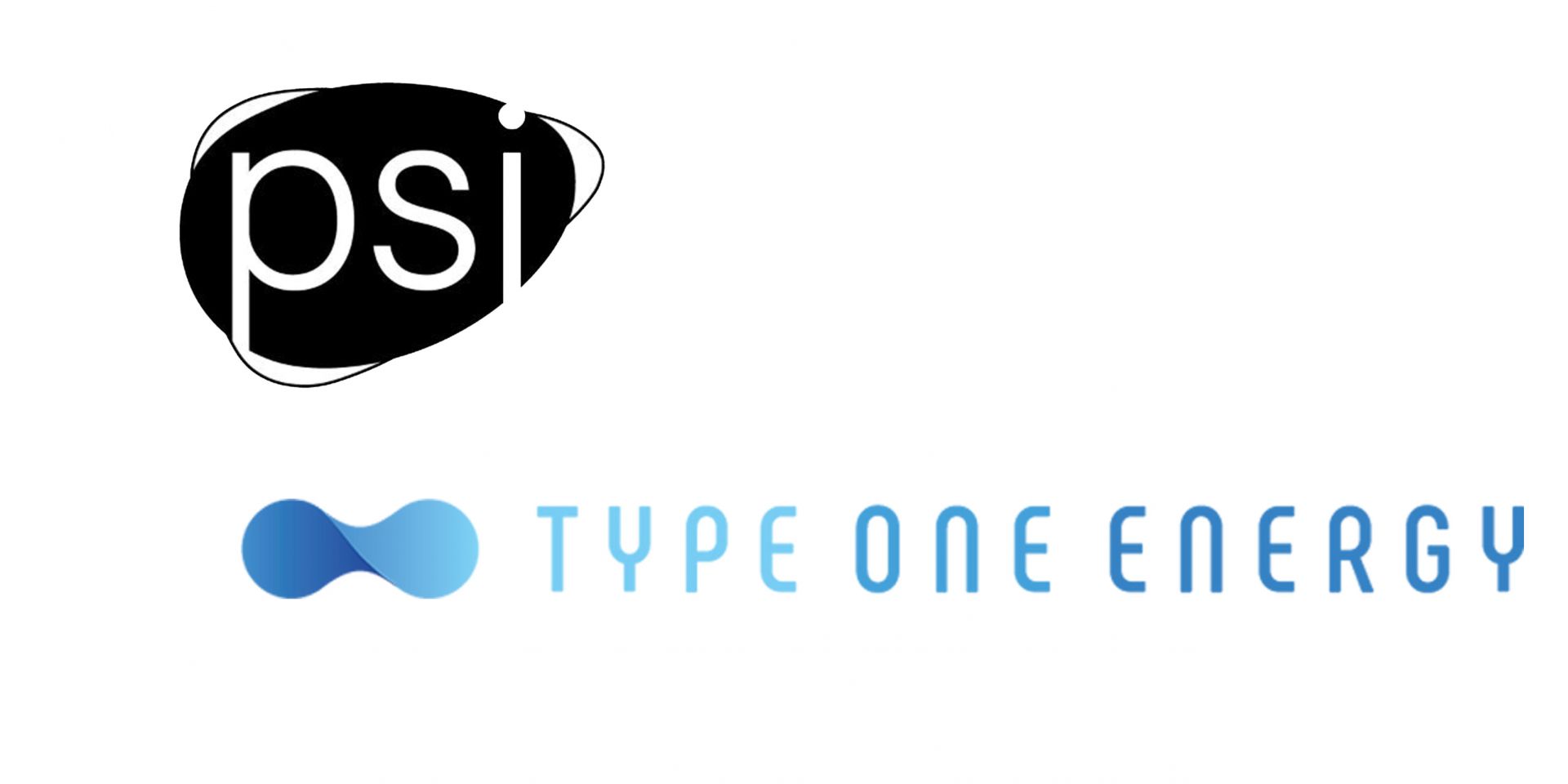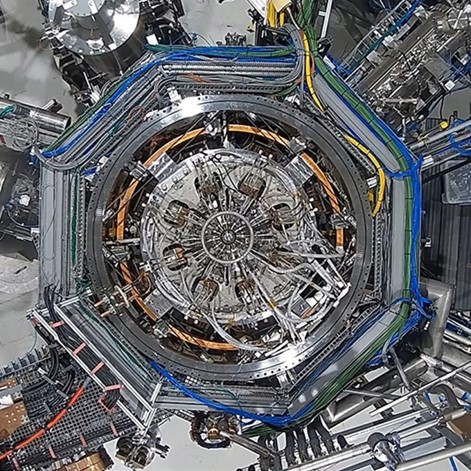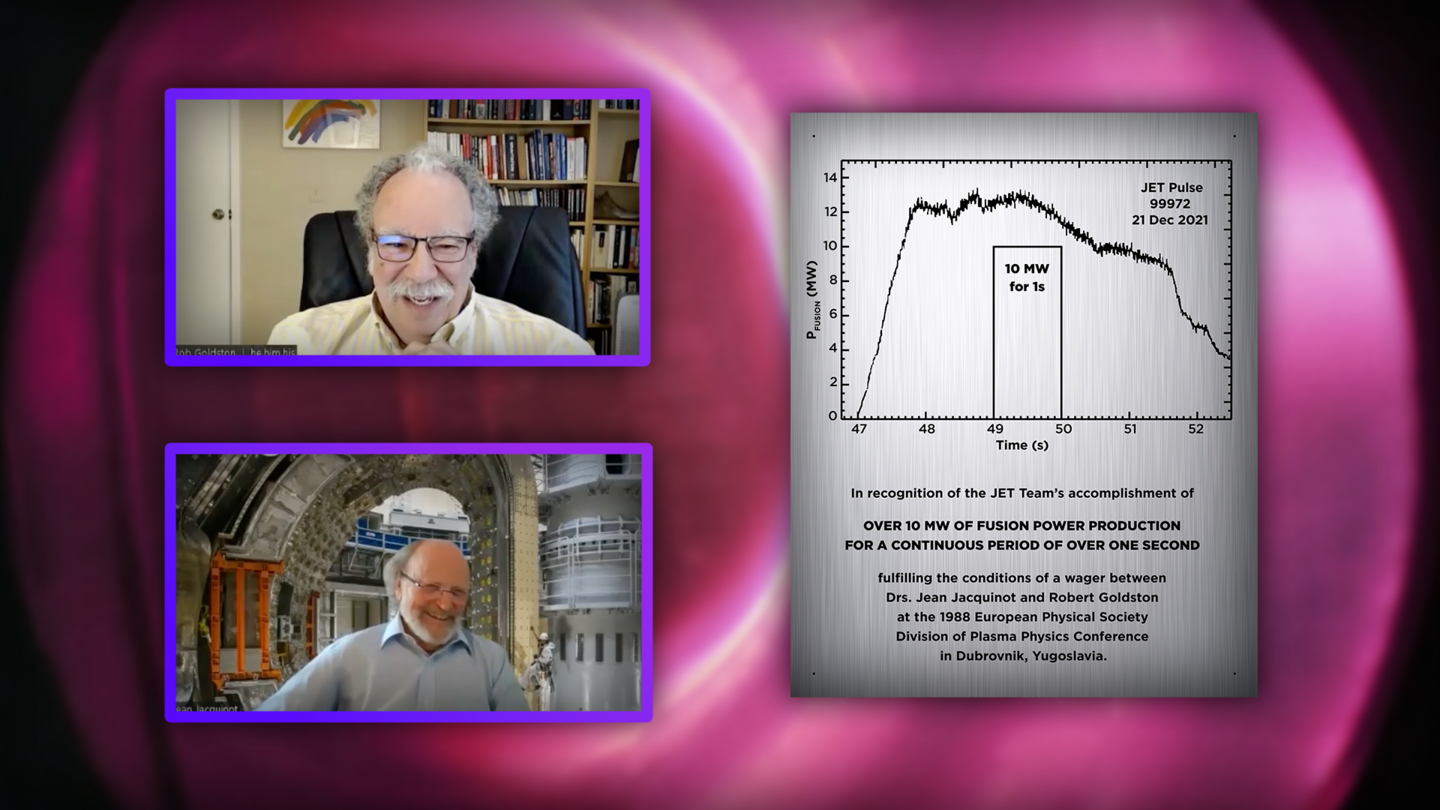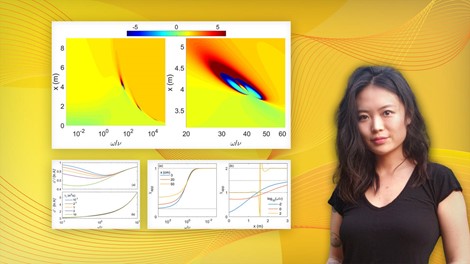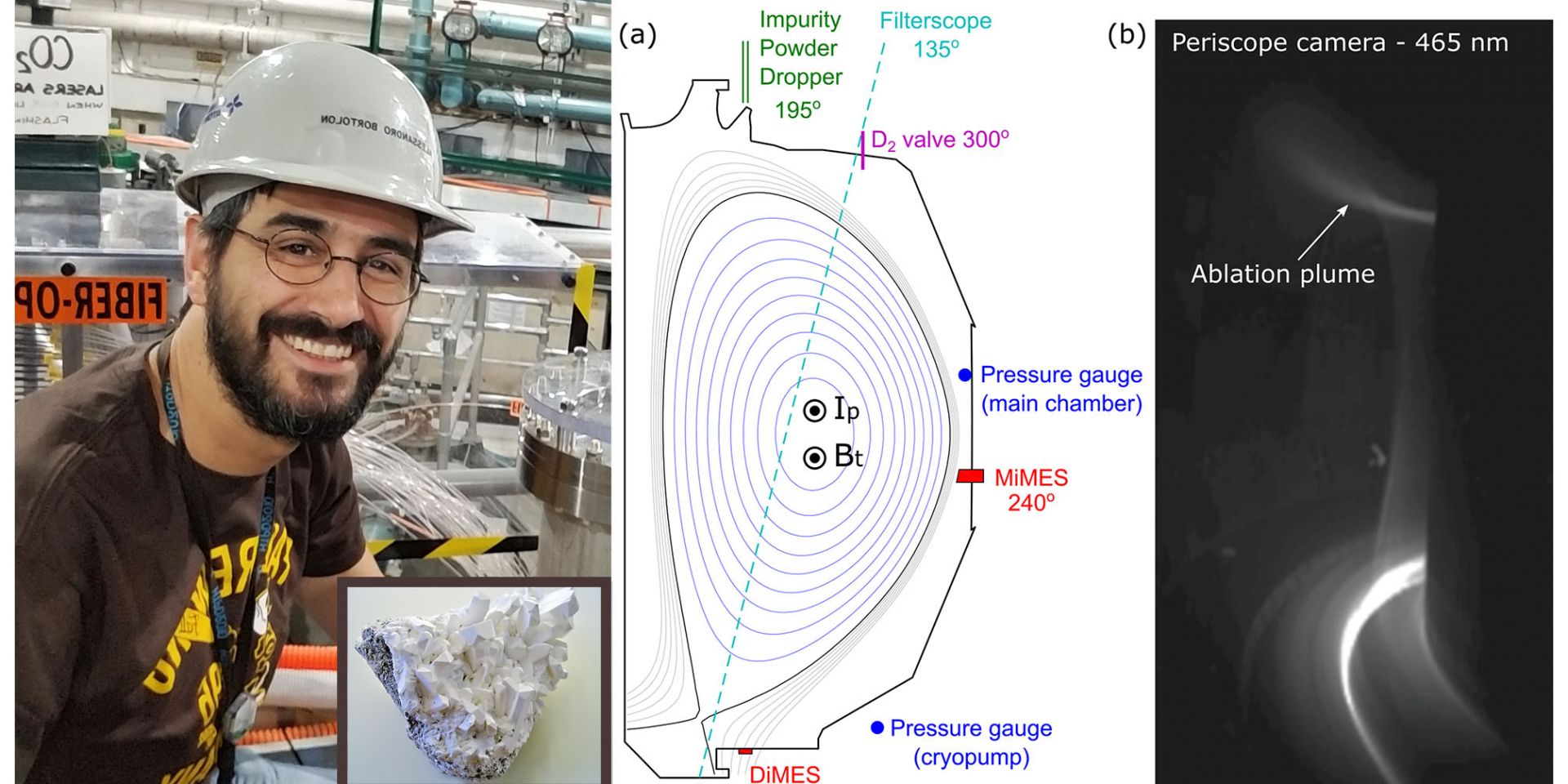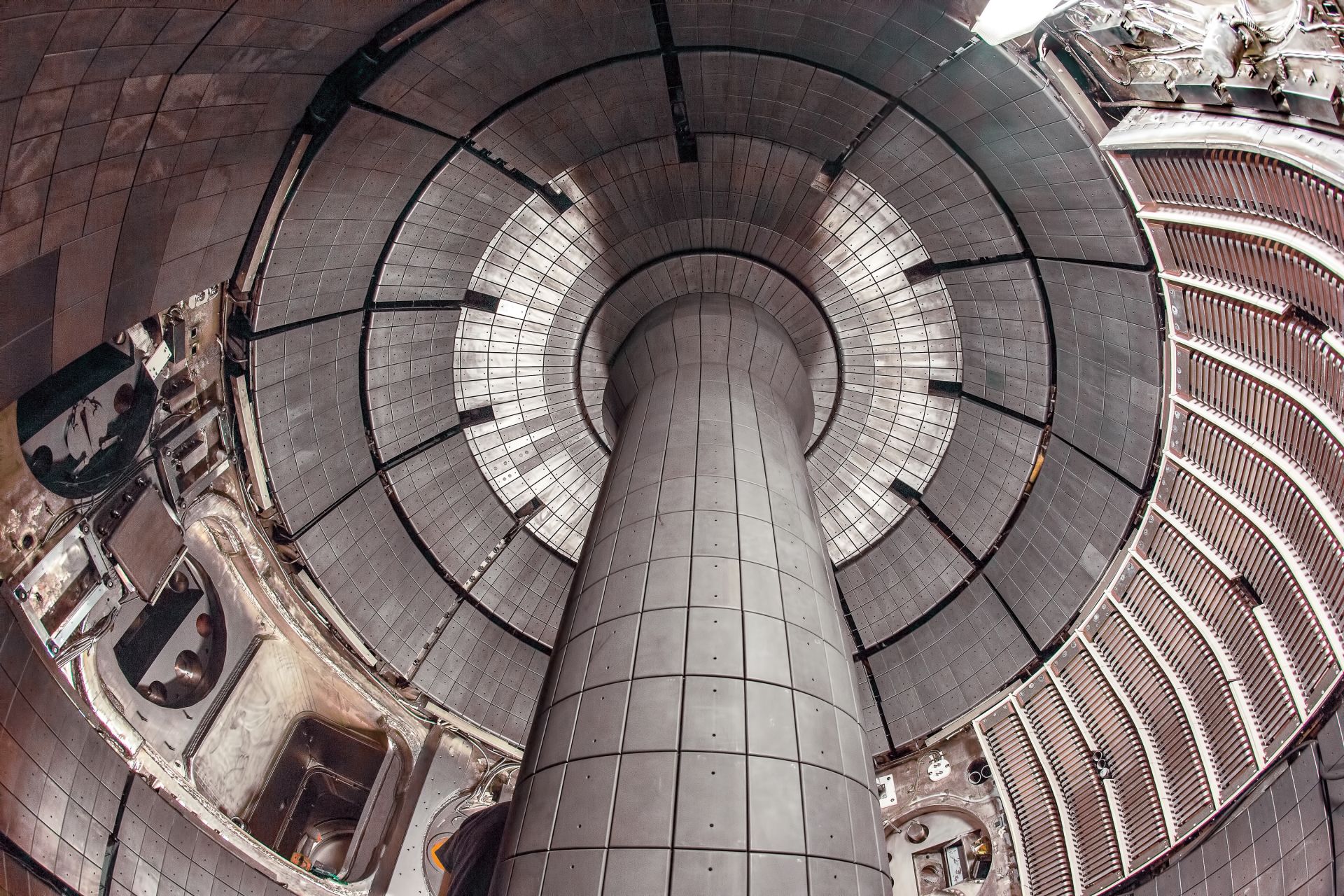MUSE, the first stellarator to use permanent magnets. (Photo: Michael Livingston/PPPL Communications)
Researchers at the Department of Energy’s Princeton Plasma Physics Laboratory are using a stellarator they designed and built using permanent rare-earth magnets and a 3D-printed shell to help test new fusion power concepts. MUSE—the first stellarator built at PPPL in 50 years—took one year to construct and generated its first plasma in February 2023. The work that went into its design has already inspired a stellarator power plant concept being developed by a commercial spin-off, Thea Energy.
The Princeton Plasma Physics Laboratory. (Photo: PPPL)
A team of engineers, physicists, and data scientists from Princeton University and the Princeton Plasma Physics Laboratory (PPPL) have used artificial intelligence (AI) to predict—and then avoid—the formation of a specific type of plasma instability in magnetic confinement fusion tokamaks. The researchers built and trained a model using past experimental data from operations at the DIII-D National Fusion Facility in San Diego, Calif., before proving through real-time experiments that their model could forecast so-called tearing mode instabilities up to 300 milliseconds in advance—enough time for an AI controller to adjust operating parameters and avoid a tear in the plasma that could potentially end the fusion reaction.
The center stack casing staged horizontally at Holtec’s manufacturing division in East Pittsburgh. (Photo: Holtec)
A key component needed for the National Spherical Torus Experiment–Upgrade (NSTX-U), the flagship fusion facility currently under repair at the Department of Energy’s Princeton Plasma Physics Laboratory (PPPL), has been delivered to the lab’s New Jersey campus.
The new TRFS provides for automated adjustment of the direction of the DIII-D primary magnetic field. (Photos: GA and PPPL)
The DIII-D National Fusion Facility now boasts a unique automated system that allows for a quick reversal of the direction of its magnetic field, expanding the range of possible fusion experiments while reducing downtime. General Atomics, which operates the DIII-D for the Department of Energy’s Office of Science, announced the new Toroidal Field Reversing Switch (TFRS) on July 26.
A plaque honoring JET’s world record–setting achievement of fusion energy production of 50 megajoules in a single shot (right) and commemorating a 34-year-old bet between Goldston (top left) and Jacquinot (bottom left). (Photo: PPPL and EUROfusion consortium/collage by Kiran Sudarsanan)
A wager struck by two plasma physicists 34 years ago was finally fulfilled in June during the opening day of the 48th European Physical Society Division of Plasma Physics, when Robert Goldston, former director of the Department of Energy’s Princeton Plasma Physics Laboratory (PPPL), virtually presented a plaque to his friend and colleague Jean Jacquinot, former director of the Joint European Torus (JET), EUROfusion's flagship fusion experiment based at the Culham Centre for Fusion Energy in the United Kingdom. Their bet, and JET’s record-breaking achievements in 2021, were celebrated in an article published by PPPL on July 8.
PPPL physicist Walter Guttenfelder with figures from the paper he coauthored with members of the NSTX-U team and 23 collaborative institutions worldwide. (Photo: Elle Starkman/PPPL Office of Communications. Collage: Kiran Sudarsanan)
According to the Department of Energy’s Princeton Plasma Physics Laboratory, recent simulations and analysis demonstrate that the design of its flagship fusion facility, the National Spherical Torus Experiment Upgrade (NSTX-U), which is currently under repair, could serve as a model for an economically attractive next-generation fusion pilot plant.
Physicist Suying Jin with computer-generated images showing the properties of heat pulse propagation in plasma (Image: PPPL/Jin/Kiran Sudarsanan)
Researchers at the Department of Energy’s Princeton Plasma Physics Laboratory (PPPL) have developed a new model of how heat flows within plasmas. According to PPPL, the model could improve insights into the behavior of plasmas and may help engineers avoid the conditions that could lead to heat loss in future fusion facilities.
Photos of physicist Alessandro Bortolon and the element boron; graph and photo showing the interior of a tokamak. Credit: Alexander Nagy and Alessandro Bortolon/Collage courtesy of Elle Starkman, PPPL
Research led by scientists at the Department of Energy's Princeton Plasma Physics Laboratory (PPPL) provides new evidence that particles of boron, the main ingredient in Borax household cleaner, can coat internal components of doughnut-shaped plasma devices known as tokamaks and improve the efficiency of the fusion reactions, according to an article published on Phys.org on April 2.
